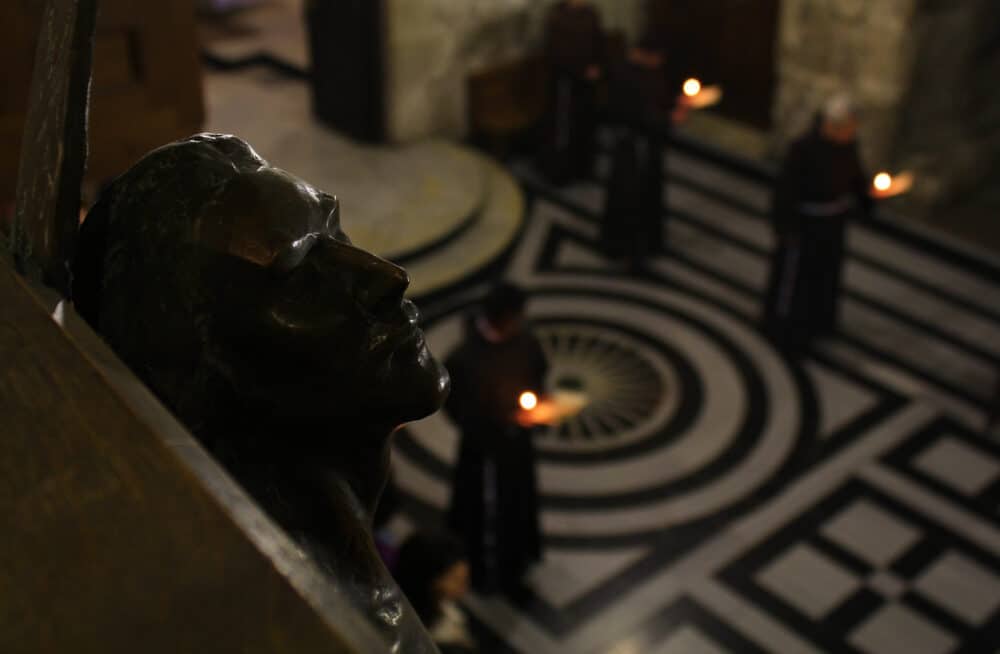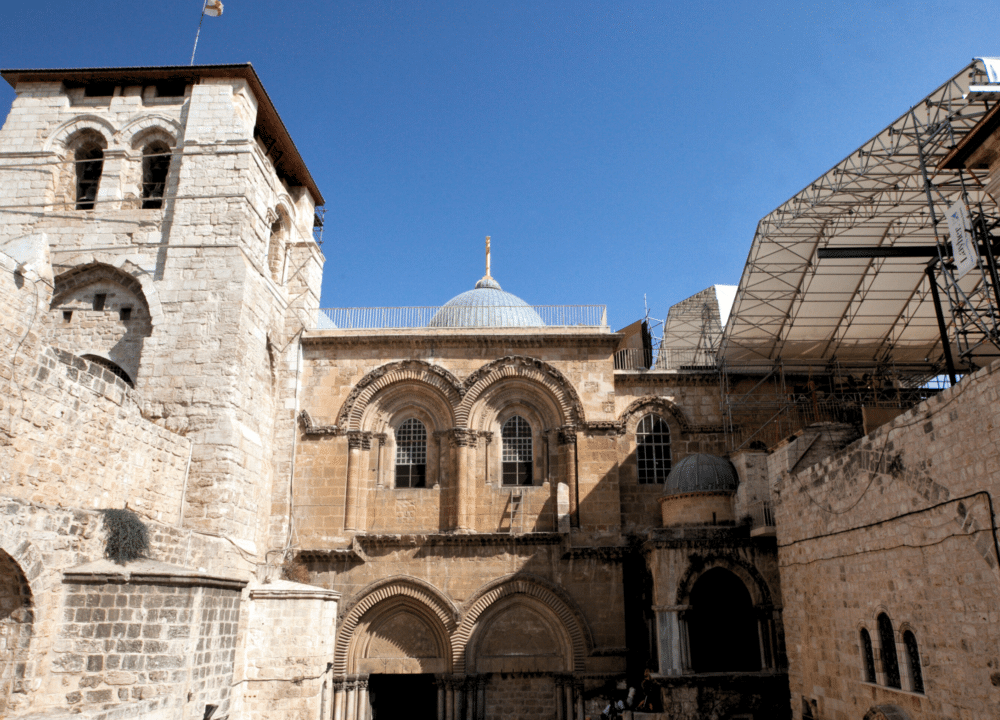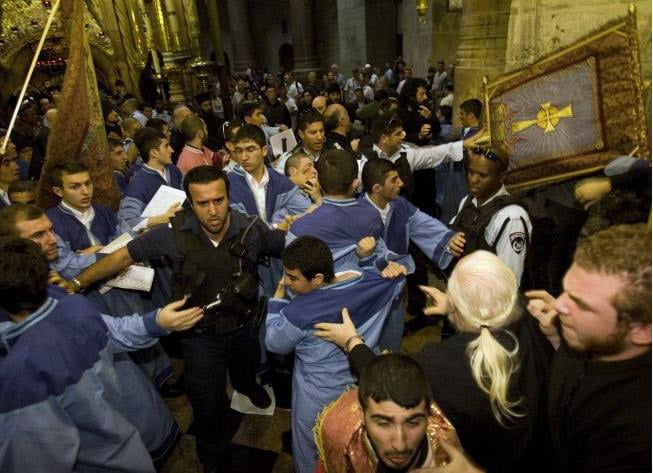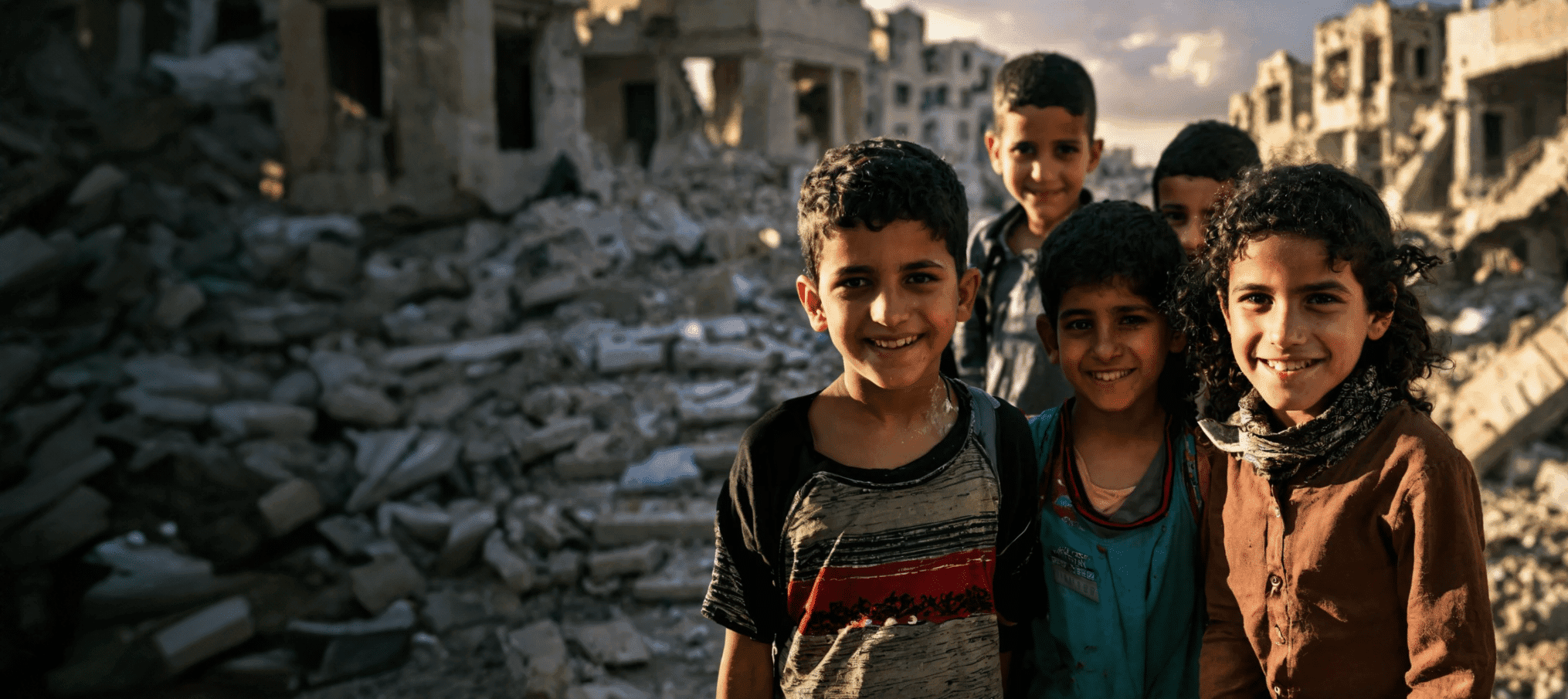The Status Quo in Jerusalem is akin to a condominium regulation, where every balance is precarious, the result of ancient agreements and shared rules among Christian denominations.
It finds its roots and significance in this place: at the crossroads of cultures, religions, and peoples that form the essence of the millennia-old Holy City.
The Holy Sepulchre embodies, more than any other place, its inclusive and contradictory soul—both rigid and forward-looking at the same time. In this article, we will delve into some little-known elements and facts that illustrate how, in some cases, the rigid rules of the Status Quo have led to debates and memorable, sometimes surreal episodes, making the Holy Sepulchre a living symbol of faith, coexistence, and diversity.
What is meant by the Status Quo?
The Status Quo in Jerusalem is a centuries-old pact, stemming from historical negotiations and concessions, which since 1852 has regulated the management and maintenance of the Holy Sepulchre. This agreement establishes the rights and responsibilities of various Christian denominations—Greek Orthodox, Latins, Armenians, Franciscans, Copts, Ethiopians, and other smaller Christian groups—so that each may carry out their liturgical and administrative functions in a context of mutual respect.
This division of roles, while a necessary mechanism for coexistence, also brings with it a complexity that translates into precise and sometimes extremely rigid rules, bordering on the absurd, capable of sparking controversies over even the smallest details.
The Contested Floor
The very floor of the Holy Sepulchre, trodden daily by hundreds of worshippers, tourists, and pilgrims, conceals fractures held together by the desire to maintain equilibrium—not always an easy task.
Each religious community within the Basilica has exclusive rights over certain areas of the floor: the entrance to the Edicule is managed by the Greek Orthodox, Catholics oversee maintenance, and the Armenians hold rights over specific liturgical celebrations. This compartmentalization not only ensures shared management but also serves as a symbol of the complexity of the Status Quo: the floor of the sanctuary is crisscrossed by a network of imaginary lines, invisible yet very tangible in the potential consequences of their violation.

In particular, the maintenance of the floor is an especially delicate issue: every single intervention, no matter how minor, must be coordinated and approved by all involved parties. An unapproved restoration could lead to prolonged disputes, so much so that in some areas, worn or even unstable floors remain untouched. Where no common decision can be reached, it is often deemed preferable—and safer!—to let the area deteriorate rather than break the rule of necessary unanimity.
The Abandoned Ladder
Leaning against a window on the external facade of the Sepulchre is a wooden ladder that has remained there for centuries. A simple wooden ladder, the kind used for manual work. No one knows who placed it there, but one thing is certain: it can no longer be moved.
The first documented mention of its presence dates back to 1728, when it appeared in a lithograph, positioned exactly where it remains today, immovable. In 1997, the ladder mysteriously disappeared for a few days, sparking an immediate uproar that threatened to ignite tensions—until it was soon found and returned to its rightful place.

The ladder outside the Holy Sepulchre stands as both a symbol and a tangible reminder of the fragile balance in a melting pot like Jerusalem and of the extreme compromises sometimes necessary to maintain peace. Nearby, a small portion of the roof is contested between the Ethiopian and Coptic communities: at regular intervals, a Coptic and an Ethiopian monk sit in a designated spot on the building to assert their community’s claim over the area.
In 2002, a seemingly trivial yet potentially explosive incident occurred: a monk, sitting to assert his denomination’s rights, moved his chair just enough to follow the shade, escaping the scorching August sun. The opposing faction interpreted the gesture as a violation of agreed-upon rules, triggering a brawl that left eleven people hospitalized.
Fights Among Monks
This leads us to another incredible chapter in the history of the Holy Sepulchre: fights among monks, which occur more frequently than one might expect.
As early as 1757, on Palm Sunday, a violent clash broke out between Greek Orthodox monks armed with clubs and Franciscans, who were forced to abandon the site. Sacred objects—lamps, carpets, and other religious symbols—were damaged, turned into weapons, or even stolen, leading to a redistribution of rights and internal balances.

Outbursts of violence have continued to erupt over the years and centuries. One of the most recent occurred in 2008, when a violent brawl broke out between Armenian and Greek Orthodox monks during preparations for the Holy Fire ceremony. During Greek Orthodox Easter, tensions run particularly high: managing the site, its ceremonies, and the delicate balance that allows so many diverse communities to coexist has been an ongoing challenge within the walls of the Holy Sepulchre for millennia.
























